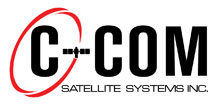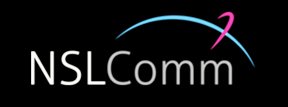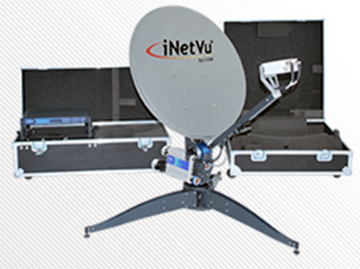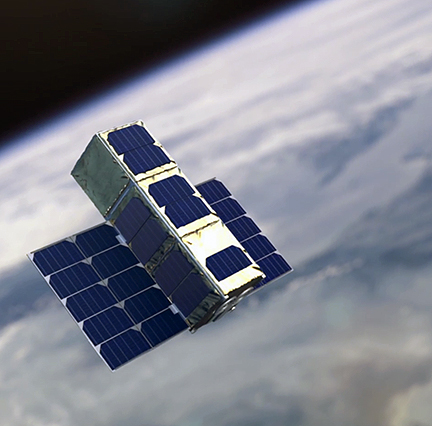

C-COM Satellite Systems Inc. (TSXV: CMI) has successfully integrated their 74 cm Flyaway antenna system with NSLComm’s Low Earth Orbit (LEO) smallsat — NSLComm is an Israel-based, pioneering smallsat telecommunications company that launched the first Gigabit per second Ka-band satellite into orbit in July of this year.
This uniquely successful test completes a significant development project between the two companies and will open new markets and create new opportunities for both companies.

C-COM's iNetVu® FLY-74.
C-COM’s engineering team developed the NSL ground station demonstrator terminals along with the required tracking software to NSLComm specifications, using the renowned iNetVu® 7700 series controllers. NSLComm provided access to their powerful Ka-band LEO nanosatellite and assisted with daily testing.
The iNetVu® FLY-74 is C-COM's newly developed 74 cm, fully automatic, motorized Ka-band flyaway product. This family of antenna systems is highly portable and the choice for various industries such as Oil & Gas, Exploration, Emergency Response, Military Communications, Cellular Backhaul, Satellite News Gathering, and many other vertical markets.

Dr. Leslie Klein, President and CEO of C-COM Satellite Systems Inc., said that for C-COM, this test with NSLComm’s LEO nanosatellite opens up new developing markets for the firm's extensive worldwide reseller base. The store and forward communication satellite services offered by NSLComm’s LEO satellites in conjunction with C-COM's iNetVu® mobile antenna systems will provide the firms' joint customers with a unique, cost-effective high-speed data transfer capability.
Dr. Raz Itzaki, CEO of NSLComm, added that for NSLComm, the addition of the C-COM FLY-74 as an approved satellite antenna solution opens up new opportunities to deliver gigabit per second speeds for mobile/transportable applications such as natural resource exploration and extraction, remote research stations, disaster management, defense, and many other vertical markets requiring high-capacity connectivity where cost, portability and reliability are key considerations.

